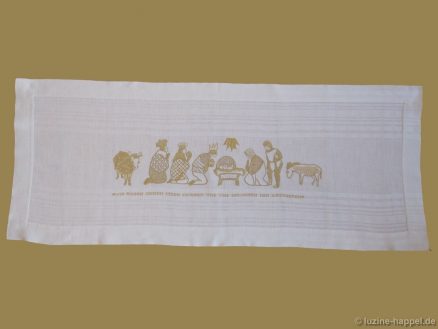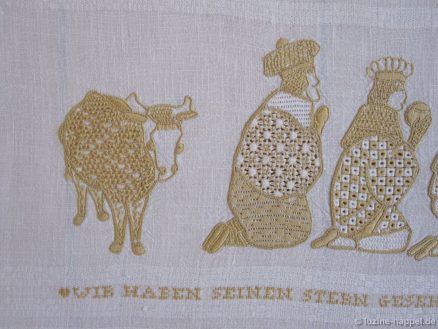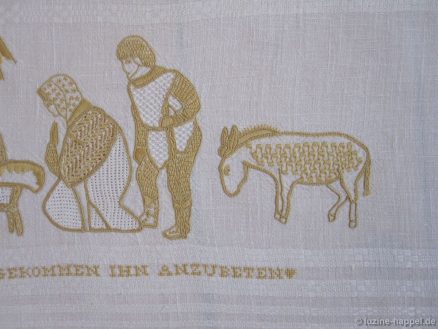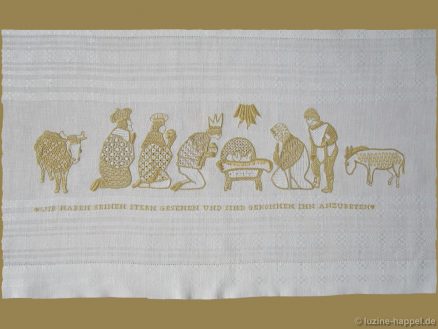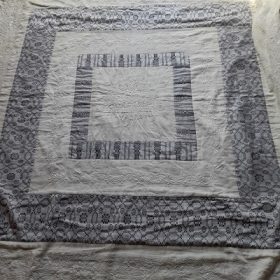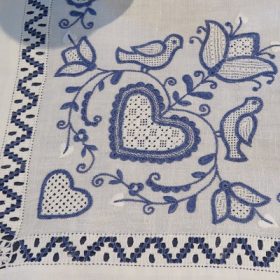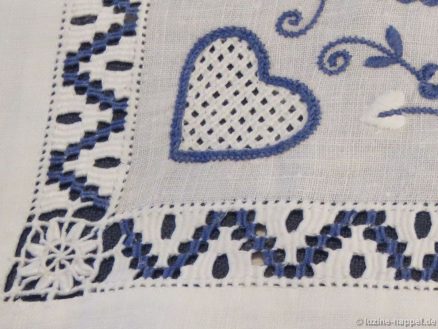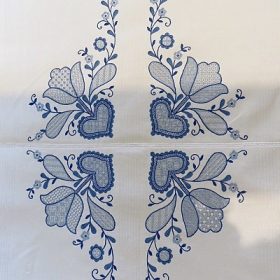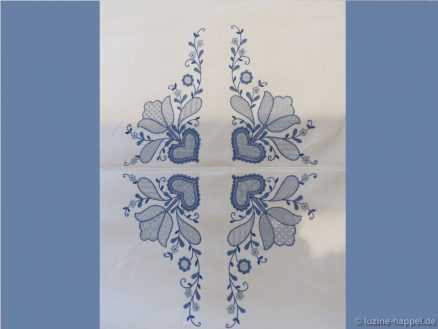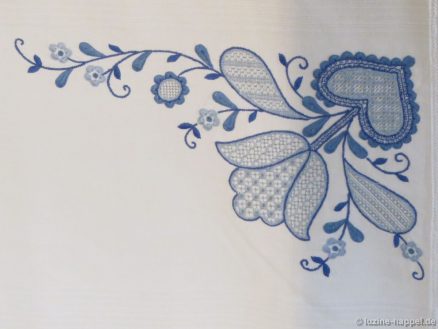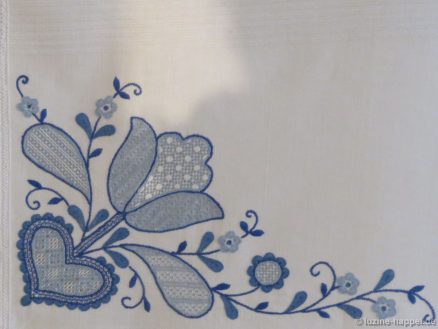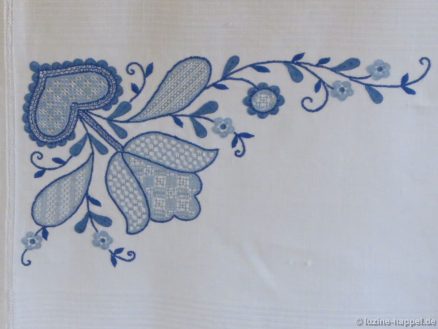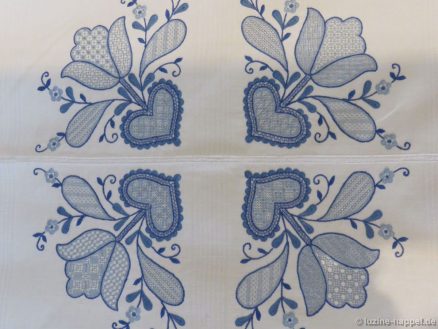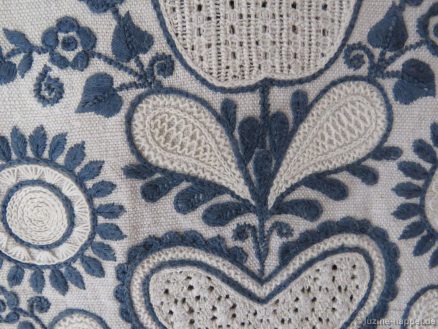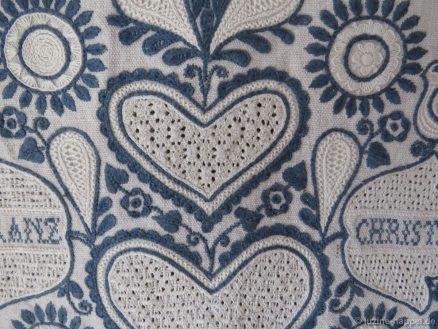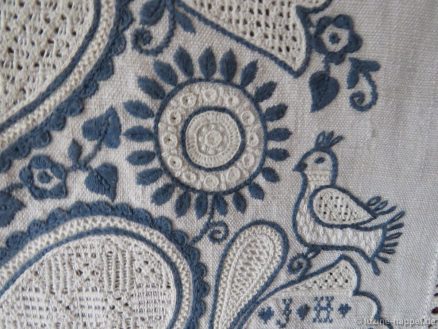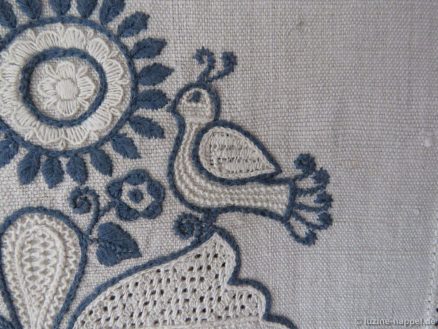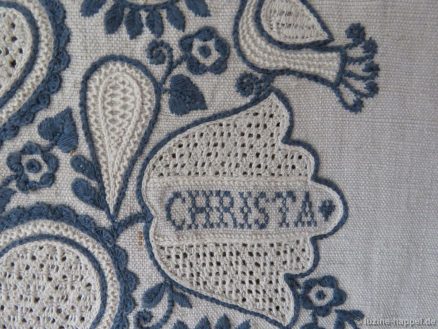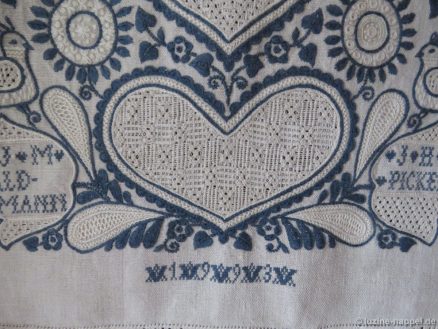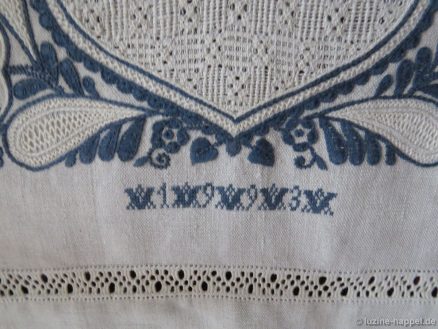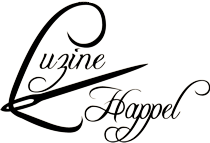Heavy, blue and white damask linen with different patterns was also woven in the Schwalm (e.g. see background fabric here).
It was used for bed linen (last three pictures), bed and window curtains and tablecloths.
During a visit to the Schwalm Museum a few years ago, Gertrude Vorwerk discovered a remaining lot of such linen with the so-called “tree pattern”. She immediately bought up the entire stock.

First she made curtains (to be seen in the picture on bottom) and embroidered a corresponding swag with Schwalm motifs. She then used parts of the fabric to create a matching bedspread. In combination with hand-woven white linen embroidered in Schwalm whitework, she created a beautiful, huge bedcovering for a double bed.
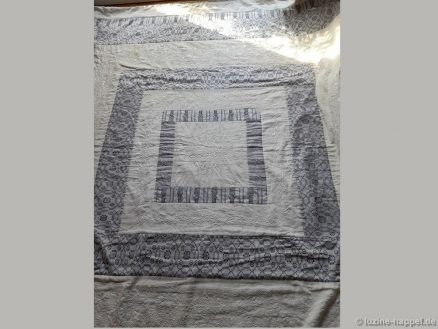
The center features a popular crown motif, complemented by the embroiderer’s initials. A narrow strip of damask fabric was attached around it. For this she used the striped part of the pattern, which is also used as the edging.
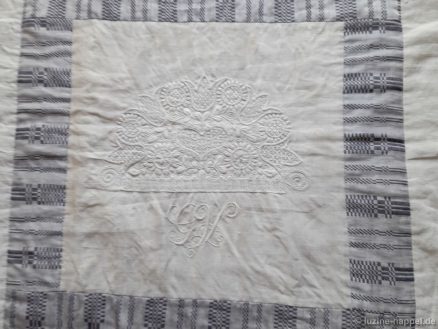
The next strip, which is embroidered and arranged in a square, shows a circumferential wave motif. This stripe has been bordered with a slightly wider stripe of the damask weave.

An even wider stripe followed – embroidered with an elaborate whitework border.

A particular challenge was the continuation of the embroidery over the attachment seams. Gertrude mastered this brilliantly.

Another very wide strip of damask fabric was followed by an unembroidered strip of white linen, bordered with a narrow strip of damask linen.
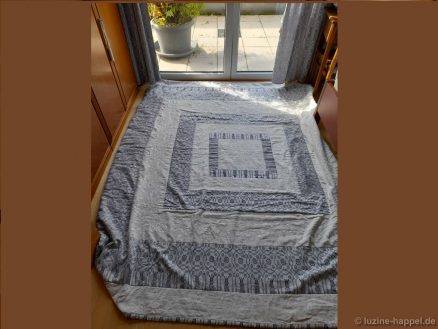
It took Gertrude about 3 years to embroider her favorite patterns onto the old linen. In connection with the blue and white damask linen, a very unusual and unique blanket was created, which the embroiderer enjoys looking at every day.
Thank you for sharing!
Schwalm Whitework and Blue (1)
Schwalm Whitework and Blue (2)
Schwalm Whitework and Blue (3)
Schwalm Whitework and Blue (4)

